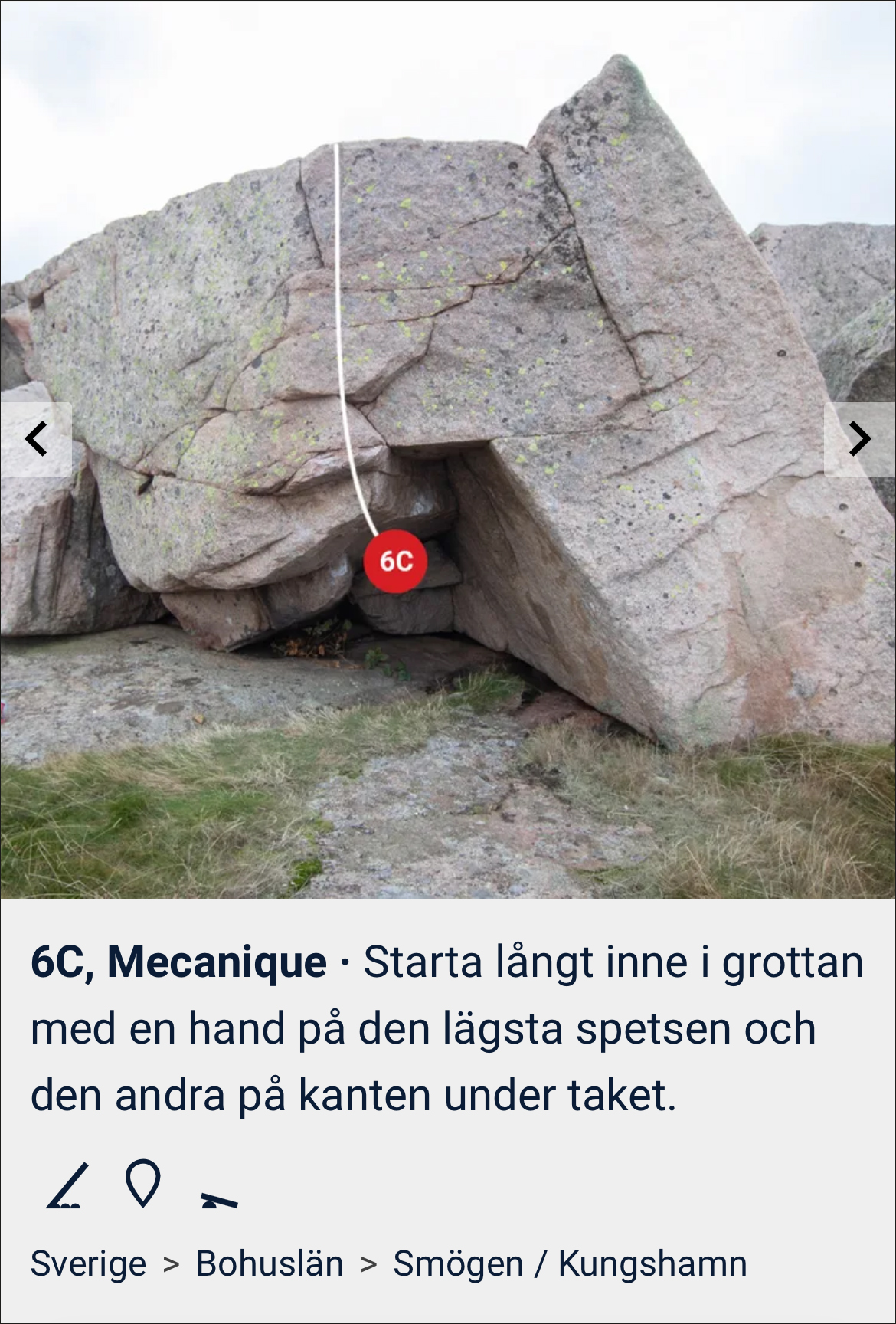
Bouldering is a game with rules. In Gryttr we are focused on keeping a clear separation between these rules and beta info.
Many boulderers like to try to solve boulder problems by themselves – they do not want any beta. We provide beta info in a separate section that you have to scroll to see.
Dont mix rules and beta
Boulder rules should be intuitive and simple. They should not be confused with beta info, which is advice on how to succeed in climbing a boulder. There can be many different betas (ways of solving a boulder problem) but if you do not follow the rules you have not really climbed the problem. You find the rules togehter with the grade and boulder name.
The standard rules
- You can start standing
- You must establish yourself on the wall with both hands and feet before starting to climb (no dynamic starts).
- If the problem is on a free standing boulder you are not allowed to use adjacent boulders.
- Rocks in the ground that are not part of the wall cannot be used.
- You must top out standing top of the bulder or wall.
Extra rules
Rules for a boulder should preferably define what you are not allowed to do. The only common exceptions are definitions of how to start (sit start or defined start holds). Here are some common rules that are applied to boulder problems to make them more interesting:
- A sit start where you start sitting on a pad that is not too thick (yes, this is vague).
- Defined start holds for each hand.
- Eliminations: rock features such as edges, ledges, corners, cracks are defined as off limits for both hands and feet.
- Sometimes a dynamic start or even a jump start is allowed.
- In rare cases a problem will have a defined end hold that you jump down from without topping out.
Bad rules
We sometimes encounter boulder problems with poorly formulated rules. We try to make the rules clearer before publishing in Gryttr. Here are examples of rules we do not like in Gryttr:
- Ambiguous eliminations
Saying «The holds on the problem to the left are eliminated» begs the question of how to know for sure which holds belong to the problem to the left. Eliminating an edge is a bad idea if the edge is hard to define. - Making rules out of beta
«You must start with a bat-hang», «Follow the crack with your hands» or «Dyno» are examples of this. Rules should focus on what is not allowed. The boulderer should be free to decide which technique to use. - Eliminating holds
Eliminating a hold that is not off to the side of the problem can be interesting as a game but should not be part of the definition of a boulder problem. - Impossible sit starts
Defining a problem as a sit start when the start holds are too high for a short person. A better solution is to define which holds you must start with.
